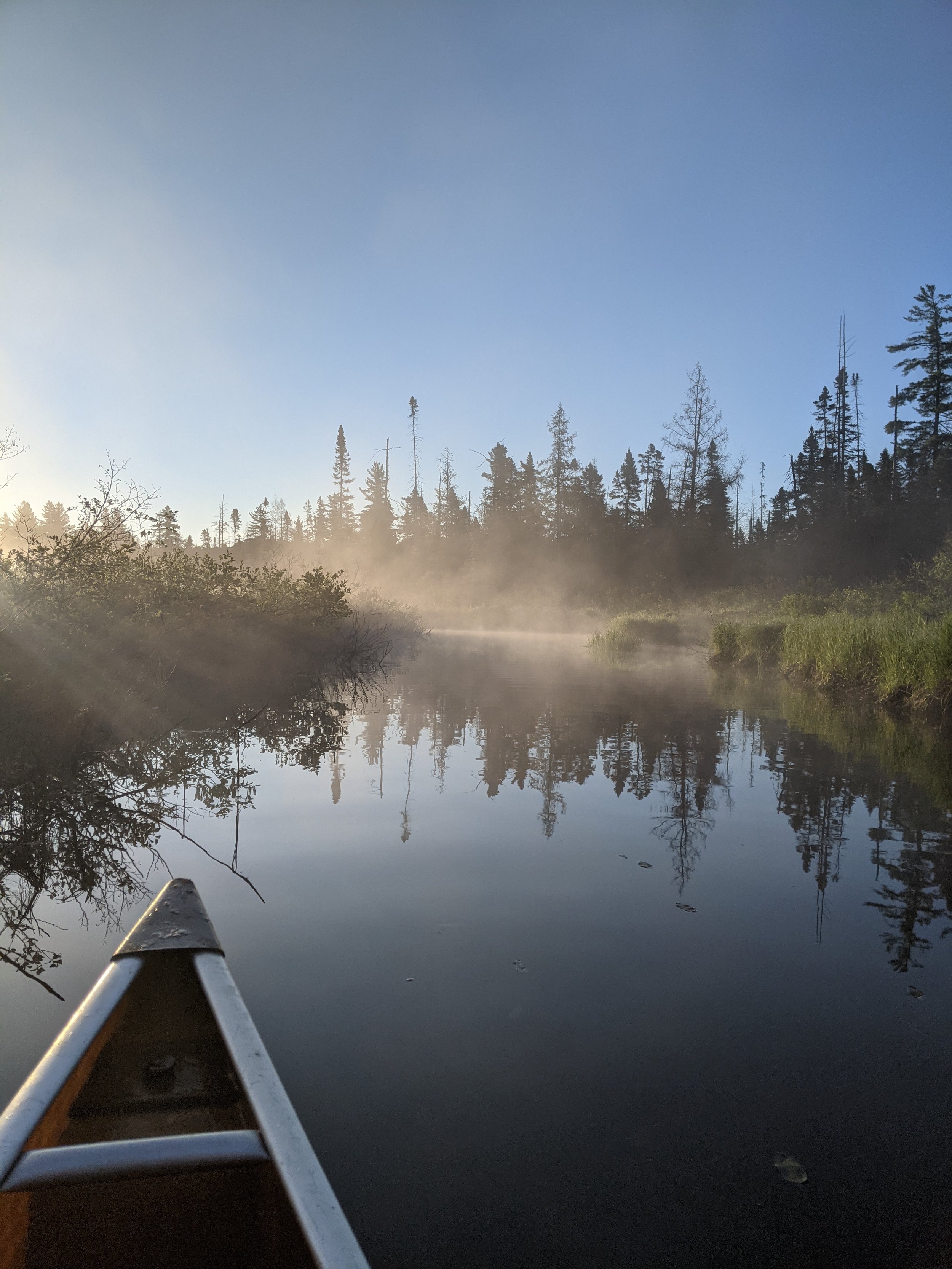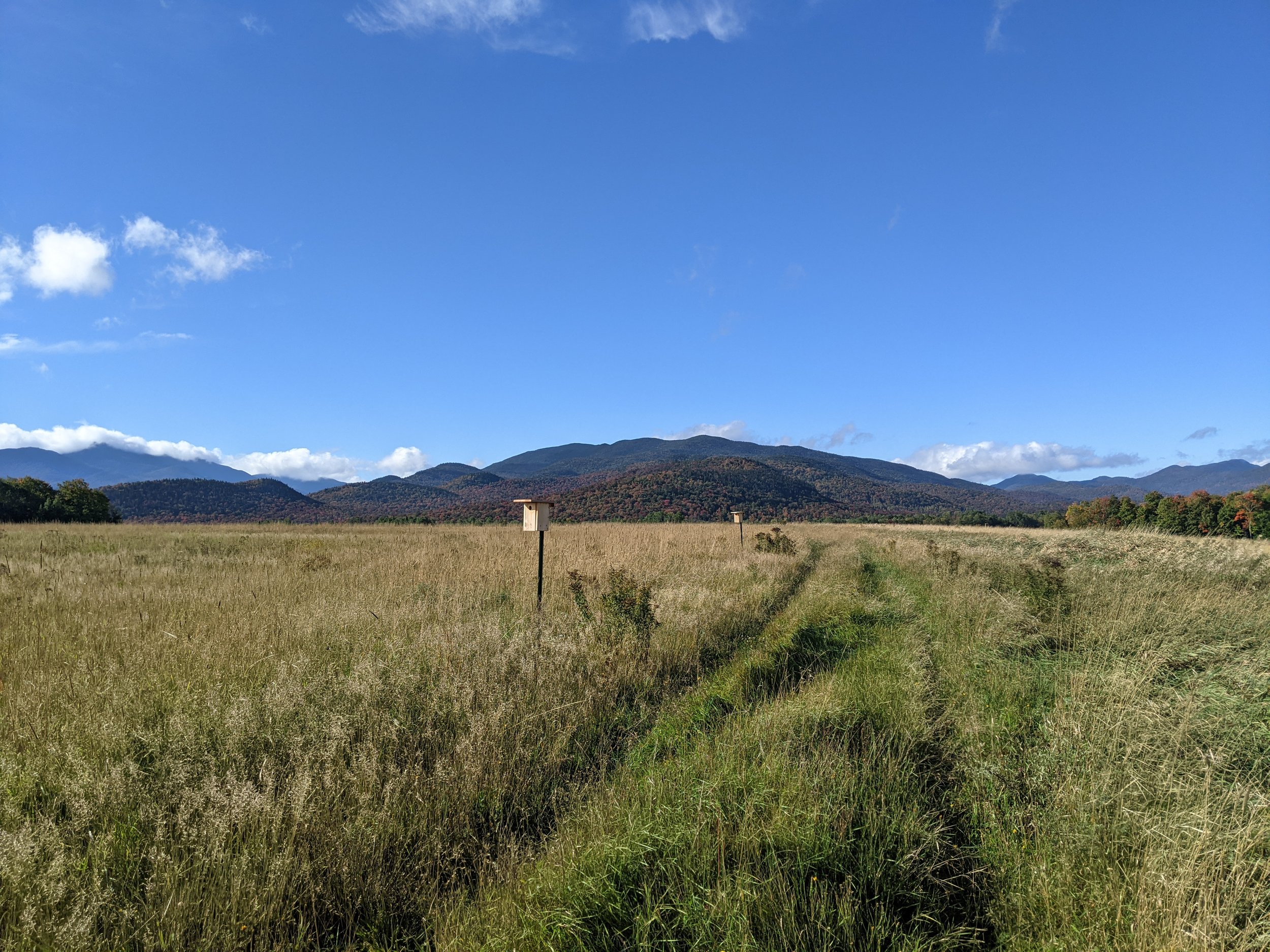June is for the birds
Every year I have to reconcile the fact that my definition of summer is now vastly different from what it was when I was growing up. As a kid, summer meant the end of the school year. If you live in the Adirondacks that was generally the end of June; by July 4th, summer activities had barely gotten started, and the water still felt pretty cold for swimming. These days, by the time my kids get out of school, I feel as though summer is nearly over and that’s because, for birds, June is the month.
I’ve been studying birds for a long time and so summer now means field season, which starts with migration. Nearly 200 bird species breed in the Adirondacks. Like the human population, there are hearty resident birds who are here year-round but we also have a large influx of summer residents who make their way from far-flung places to nest and raise young in the varied habitats of the park. Migration is slower now, but from mid to late May, things are in very high gear with birds arriving to the region. According to BirdCast, an amazing website maintained by the Cornell Lab of Ornithology, peak numbers occur in mid-May when some 400,000 nocturnal migrants might cross over Franklin County on a given evening. Even now in early June, tens of thousands may still be crossing each night. Numbers like these cause me to frantically pull out my binoculars and notebooks and fire up all my sources of recorded bird songs so that I can relearn the ones I forget every year before all the birds get back and we have to start counting.
Birds as indicators of ecosystem health
Birds are great indicators of environmental conditions and AWI is engaged in a couple of bird-related projects. In a manner analogous to our long-term monitoring of water quality on Adirondack lakes, we also check up on boreal wetland birds in about 60 locations throughout the park every summer. This work is focused on a set of target species for whom the Adirondack region represents the southern extent of their range. These species are widespread at higher latitudes in Canada but their association with northern habitats and climates makes them particularly vulnerable to a warming climate.
Our long-term monitoring has revealed important drivers of population trends and the influence of temperature and precipitation on their persistence in our region. Summer monitoring of boreal birds consists of point counts, which are as simple as they sound and as low tech as it gets, we just stand and listen. At each of our study locations, a single observer walks - or paddles - to 5 points along a transect, stopping for 10 minutes at each point and counting all birds seen or heard. With my ears and a notebook (or a smartphone), I can learn a lot about what’s happening in our bogs and fens.
Among my favorites of these locations are admittedly the paddling transects. A significant amount of boreal habitat in the Adirondacks can be found floating on the edges of some of our lakes and rivers. If you have never paddled the Osgood River from Osgood Pond near Paul Smiths, it is worth a visit. The majority of the wetland on the shore is labeled as Boreal-Laurentian Bog or Acadian Acidic Basin Fen by the Nature Conservancy, the Park Agency even calls it a muskeg in some of their wetland mapping. Whatever you call it, this fantastic swamp is a great place to see Lincoln’s sparrow, palm warbler, Canada jay, black-backed woodpecker, maybe even an olive-sided flycatcher or rusty blackbird if you’re really lucky. It’s my favorite transect of the field season. Wetlands like these help to improve water quality by trapping sediments, nutrients, and pollutants; they are worthy of our careful stewardship and protection.
Grassland management to conserve birds
AWI also works with birds in Lake Placid, partnering with the Uihlein Foundation to recommend habitat improvements and management strategies for grassland birds. Bobolinks and savannah sparrows are the primary targets of our efforts, but long-term strategies for a former agricultural parcel include potential restoration and improvement efforts to benefit a broad suite of grassland species, efforts which will also benefit soil carbon storage capacity and water quality protection in the nearby Ausable River. During the 2021 field season, we partnered with Northern New York Audubon to build bird boxes for bluebirds and tree swallows and to provide additional nesting opportunities in two important grassland locations. I’m happy to report that numerous birds have made themselves right at home and nest boxes are regularly being used by both species.
Get involved
I hope that whatever your summer plans may be, they include getting out and about and enjoying the birds in some way. With smartphone tools like Merlin, it has never been easier to dip your toe into the world of birding, or to contribute to scientific knowledge through birding, if you are so inclined. There is a citizen science project for everyone, from the easy and relaxing to the intense and hardcore. Without leaving your yard, you can log any and all birds you observe into eBird, contributing to one of the world’s largest biodiversity-related science projects. With a little more effort, you can participate in annual events like Global Big Day or the Christmas Bird Count. And if you’re highly ambitious, you can even adopt a mountain through Mountain Birdwatch and climb it at 3am in pursuit of documenting Bicknell’s thrush, our region’s only endemic songbird. Each of these efforts contributes meaningfully to our understanding of bird ecology, migration, habitat use, and conservation.



